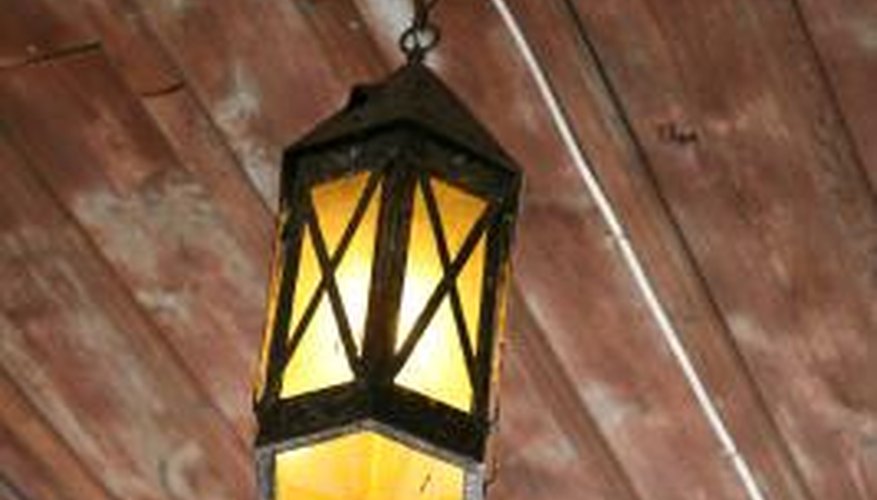Nails hold tongue-and-groove ceiling boards to the ceiling joists. The nails go through the tongue side of the board, and then the groove side of the next board goes over the tongue. This unique design hides all of the nail heads for a seemingly nailless finish. Trim work around the edges of the ceiling hides the gaps between the last tongue-and-groove boards and the walls. Remove a tongue-and-groove ceiling to make repairs or change the look of a room.
Remove any light fixtures on the ceiling. Turn off the electricity in the fuse box before removing the fixture. Use a flathead or Phillips screwdriver to undo the screws that hold the fixture to the mounting bracket. You only need to remove fixtures that prohibit the removal of the tongue-and-groove boards.
- Nails hold tongue-and-groove ceiling boards to the ceiling joists.
- You only need to remove fixtures that prohibit the removal of the tongue-and-groove boards.
Slide a flat pry bar in between the edges of the trim work and the tongue-and-groove ceiling boards. Pry the trim away from the ceiling. Pull down each piece of trim and remove it from the room.
Walk to the side of the room where you can see the tongue side of a board against the wall. You will see the nails holding it in place.
Slide the angled end of the pry bar in between the tongue and the wall. Hook the end of the pry bar on the topside of the tongue and pull downward. When the board begins to pull away from the ceiling joists, slide the pry bar in farther and pull again. As you pull, the groove side of the board will pull away from the tongue of the next board. Grab the board with your hand and pull it down from the ceiling. This first board will be the most difficult.
- Slide a flat pry bar in between the edges of the trim work and the tongue-and-groove ceiling boards.
- Grab the board with your hand and pull it down from the ceiling.
Pry down each subsequent board until all the boards have been removed from the ceiling.
TIP
Use an A-frame ladder for high ceilings.
WARNING
Wear a dust mask to protect your lungs from any dust that's collected above the boards. Wear safety glasses to protect your eyes from falling debris. Wear leather work gloves to protect your hands from splinters.
